Website: https://visx.io/
Announcement video: https://youtu.be/Ulz96RZXHAY
Announcement post: https://community.wolfram.com/groups/-/m/t/1124967
Hello WL Community
For the past few years I have been developing visX, a visual frontend to the Wolfram Language. VisX is ready for a small-scale beta test and I'm looking for volunteers.
What is visX?
Wolfram Language code can often be thought of as a set of functions, each of which takes input expressions, does something, and produces an output expression. VisX lets you write WL code exactly this way - you draw a diagram, connecting blocks with links. For example, say you want to count how many times each digit (0 to 9) occurs in the first 100 digits of Pi, then see a BarChart and maybe some intermediate results. With text-based WL code, you'd write something like
BarChart[Count[RealDigits[N[Pi, 100]][[1]], #] & /@ Range[0, 9]]
With visX, it looks like this:
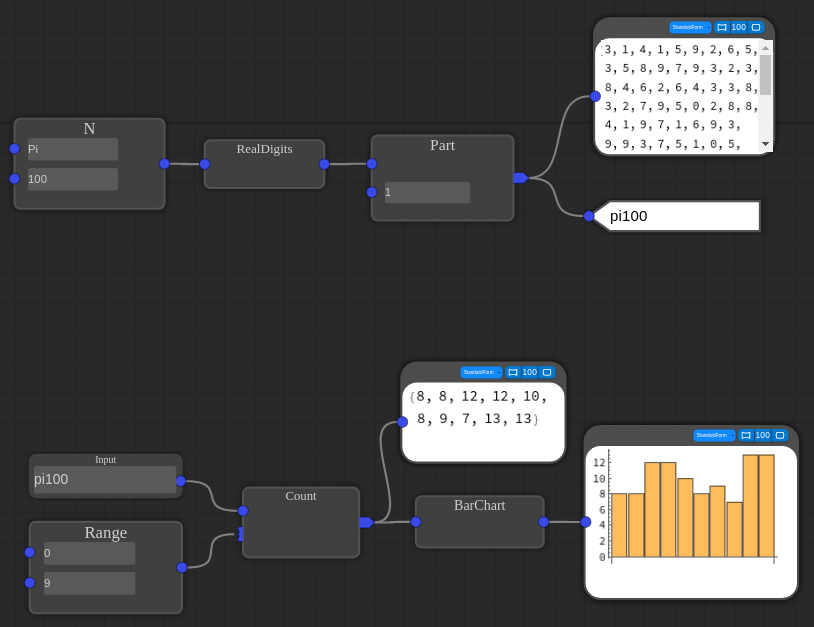
It's basically WL syntax rendered as blocks and links. Just like regular WL code, visX blocks can be nested deeply, but with the visual interface, it's easy to zoom in and out. At any point, the UI will show you the right amount of detail for each block - sometimes no detail at all, sometimes its name and labels on its inputs, sometimes its actual contents (which can then be edited or further zoomed...).
Normally, blocks just transform inputs to output, but the Count block here is mapped over its second input which is indicated by that connection port being drawn as a curly brace. (That's basically visual syntactic sugar for "&/@" as used in the WL code.)
VisX is stand-alone software that installs and runs locally on your machine, evaluates the diagram using your local WL kernel, and receives the results and puts them back in the diagram. You can load data files using Import as usual.
You can see some more examples and neat features at visx.io, and there is a tutorial video here.
Key features
Visual
Draw the computation you want. Values flow left to right from block to block. This example plots a function (Cos[x]) and its integral.
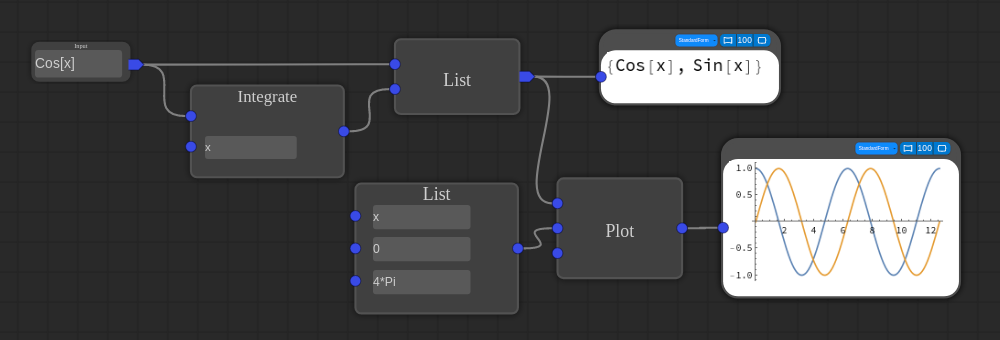
Zoomable
Blocks can be made up of other blocks. You can zoom into your diagram to see more detail or zoom out to get the big picture.

Flexible
You can enter Wolfram Language code directly into a block, and it will correctly interact with the rest of the diagram.

Or you can enter Wolfram Language code (on the bottom) and automatically transform it into visX blocks.
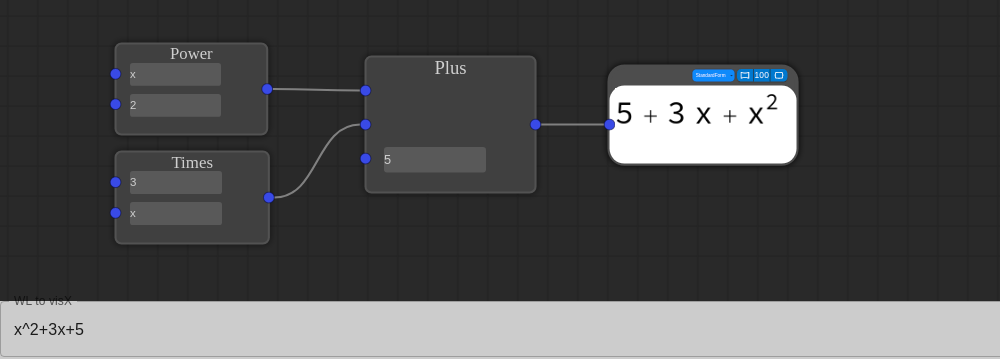
Thorough
visX includes almost every Wolfram Language function, organized and described.
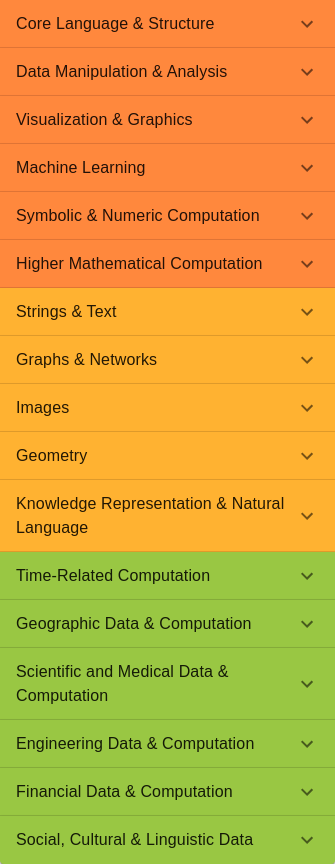

Intelligent
You can enter phrases like "atomic mass of Lithium," "Earth orbit radius," or "age of queen Elizabeth II on the day Barack Obama was born." The system will interpret what you meant, look up or calculate the answer, and return it in a form that you can use in further computations. Dissimilar units (like feet and meters) are converted automatically.

Stocked
The Wolfram Language provides built-in access to a broad array of publicly available data sources on topics such as chemistry, mathematics, physics, geography, engineering, astronomy, medicine, people, culture, art, music, food, health, finance, linguistics, weather, materials, transportation, sports, history, etc...

Unified
Import local data as usual. Just like a Mathematica notebook, data, computations, and results are all shown in a single interface.
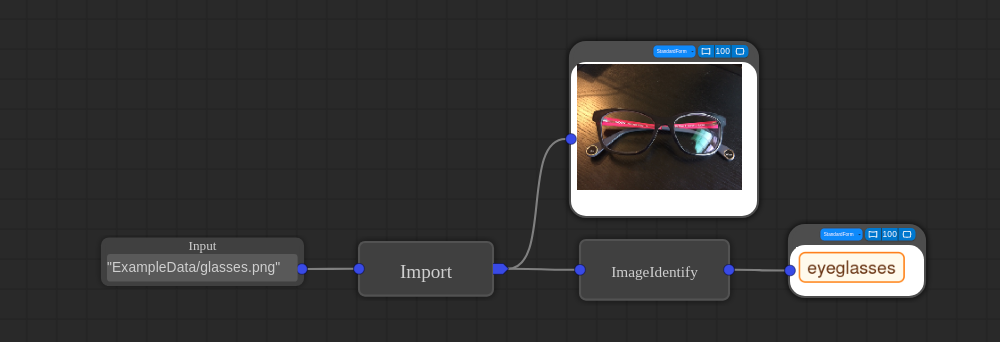
What is this beta test?
Except for a few small tests with friends and colleagues, visX has only ever run on my computers while I've been developing it. Now I need to make sure it runs on other people's computers. The purpose of the beta test is to find bugs or hiccups with the installation and initial usage. Maybe windows rejects the installer because of some security setting, or visX can't find your WL kernel, or there's some issue with text encoding in your language, or the kernel generates some error message I've never seen which causes visX to crash, or the kernel hangs which causes visX to hang (shouldn't happen but you never know). These are the kind of issues I want to find, and I'm looking for volunteers to be beta testers.
The beta test will run during the month of December. You'll download the software and I'll give you a beta license key. In order to participate in the beta test, you must be:
- generally familiar with the Wolfram Language, but you don't have to be an expert.
- willing to get on a 1-on-1 video call with me and share your screen so I can watch and help you install and use visX the first time.
- willing to get on a 1-on-1 call with me as a follow-up a week or so later after you've had some time to play with the software. I want your feedback.
- able to do the testing on Windows or Linux. No Mac build yet.
I'm looking for about 10 volunteers. Employees of Wolfram Research are also welcome to be beta testers.
If you are selected as a beta tester, I will give you a beta license key and you can use visX until the beta test period ends. Of course there will be no charge for the beta test.
I want to be a beta tester. What should I do?
Email me at nhoff@visx.io or call 1-617-465-2482. We'll arrange a video call and I'll get you set up with a license key. Thank you for your help.